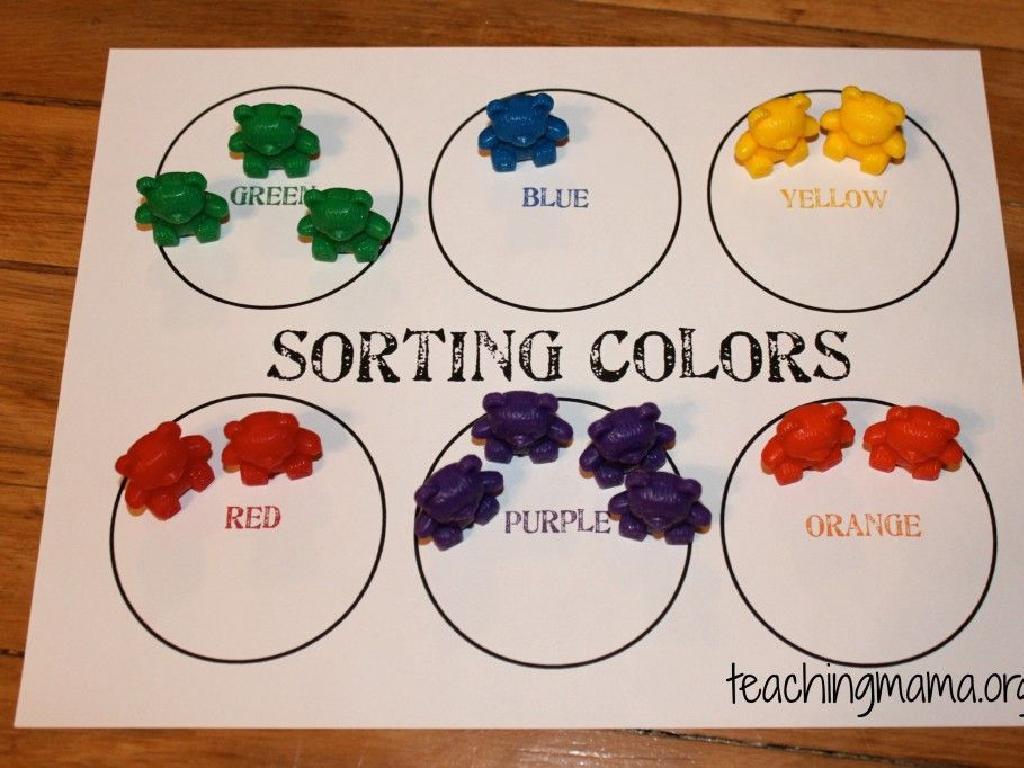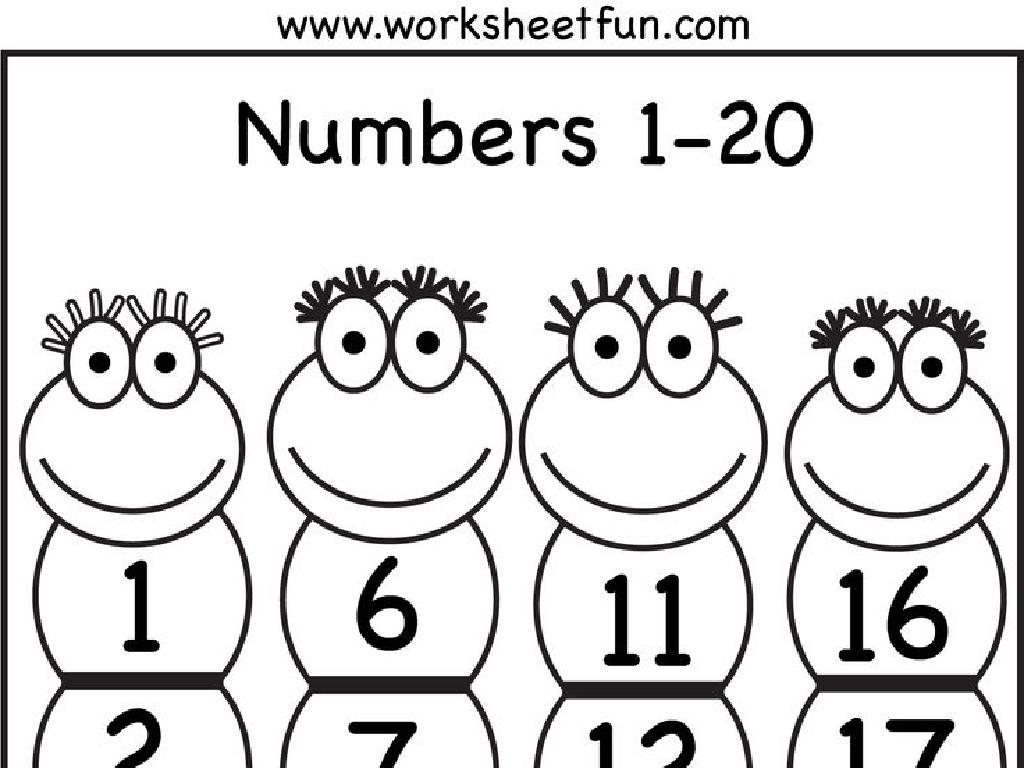Add And Subtract Money Amounts
Subject: Math
Grade: Third grade
Topic: Money
Please LOG IN to download the presentation. Access is available to registered users only.
View More Content
Introduction to Money
– Learn about coins and bills
– Pennies, nickels, dimes, quarters, and dollars
– Understand the need for money
– Money is used to buy things we need and want
– Explore different denominations
– From 1 cent to 100 dollars, money comes in many values
– Practice adding and subtracting money
– Use real-life examples like buying a toy or a book
|
This slide introduces students to the concept of money, which is an essential part of everyday life. Start by showing them different types of coins and bills, explaining the value of each and how they can be used in transactions. Discuss the importance of money in society, such as purchasing goods and services. Highlight the various denominations of money, making sure to explain terms like ‘denomination’ in a way that’s understandable for third graders. Finally, engage the students with simple addition and subtraction exercises using money, such as calculating change after a purchase, to make the learning process interactive and practical.
Recognizing Money: Coins and Bills
– Identify different coins
– Pennies, nickels, dimes, quarters
– Learn the value of each coin
– A penny is 1¢, a nickel is 5¢, a dime is 10¢, and a quarter is 25¢
– Recognize bills of various denominations
– $1, $5, $10, $20 bills and their features
– Practice counting money
– Use real or play money to add up different amounts
|
This slide introduces students to the basics of U.S. currency, focusing on recognizing and understanding the value of coins and bills. Start by showing real or play coins and bills and discussing their names, values, and physical characteristics. Engage the students in hands-on activities where they can touch and interact with the money to better memorize the different denominations. Practice counting exercises with them, starting with coins and then moving on to bills, and finally combining both. Encourage students to ask questions and share any prior knowledge or experiences with money. This foundational knowledge is crucial for their ability to handle money in real-life situations.
Adding Money Amounts
– Learn to add different money amounts
– Combine money using addition
– Example: Adding coins together
– If you have 2 quarters, 3 dimes, add them up to find the total
– Example: Adding bills with coins
– Add the value of bills to the total from coins for a grand total
|
This slide is aimed at teaching third-grade students how to add various money amounts, including both coins and bills. Start by explaining that money can be added just like other numbers, emphasizing that each coin and bill has a specific value. Use real-life examples, such as adding up coins from a piggy bank or bills from a wallet, to illustrate the concept. Encourage students to practice by setting up a mock store where they can add up the prices of items they ‘buy’. Provide worksheets with different sets of coins and bills for additional practice.
Subtracting Money Amounts
– Steps to subtract money
– Line up the numbers by decimal, then subtract
– Making purchases & giving change
– If an item costs less than the money given, calculate the change
– Examples: Subtracting various amounts
– Subtract $5.25 from $10.00, or $1.50 from $2.00
– Practice with real-life scenarios
|
This slide aims to teach students the concept of subtracting money, which is a vital life skill. Start by explaining the steps to subtract money, emphasizing the importance of aligning the decimal points. Then, discuss the real-world application of making purchases and giving change, ensuring students understand how to handle transactions. Use clear examples, such as subtracting smaller amounts from larger ones, to illustrate the process. Finally, engage students with practical exercises, such as role-playing a store scenario where they buy items and give change, to reinforce their understanding.
Word Problems with Money
– Apply addition and subtraction
– Use skills to add and subtract dollars and cents
– Solve real-life money problems
– How much change from $5 for a $2.50 ice cream?
– Read word problems carefully
– Understand the problem: What is being asked?
– Practice with given examples
– Try solving: If you have $10 and spend $3.75, how much left?
|
This slide aims to help students apply their addition and subtraction skills to real-world scenarios involving money. Start by explaining how these math operations are used daily, such as making purchases or receiving change. Provide clear examples of word problems and guide students through the process of solving them. Emphasize the importance of reading the problem thoroughly to understand what is being asked. During practice, encourage students to visualize the situation and use concrete objects like play money to enhance their understanding. Offer a variety of examples and ensure to include problems with both whole dollar amounts and those requiring the addition or subtraction of cents.
Class Activity: Money Role Play
– Set up a classroom store
– Role-play as cashier and shopper
– Add and subtract during transactions
– Use play money to simulate buying and giving change
– Reflect on the activity
– Discuss what was easy or difficult
|
This activity is designed to give students practical experience with adding and subtracting money. Set up different ‘store’ stations around the classroom with items labeled with prices. Provide play money for transactions. Students will take turns being the cashier, who adds amounts to determine the total cost, and the shopper, who subtracts money to give the correct change. After the role-play, gather the students to reflect on the activity, discussing what strategies helped them add and subtract effectively and what they found challenging. Possible variations for different students could include offering discounts, dealing with returns, or handling exchanges, to add complexity to the transactions.
Review & Questions: Money Math
– Recap adding & subtracting money
– We learned how to combine and separate amounts
– Ask any questions you have
– It’s okay to be curious, ask away!
– Quick oral quiz on money math
– Let’s test our skills with a fun quiz
– Share what you’ve learned today
|
This slide is meant to conclude today’s lesson on adding and subtracting money. Start by summarizing the key points of the lesson, ensuring that the students have understood the concept of combining different money amounts and calculating change. Encourage students to ask questions about any part of the lesson they may not have understood fully. Proceed with a quick oral quiz, asking questions like ‘If you have $5 and you buy a toy for $2, how much money do you have left?’ to assess their understanding. Finally, allow students to share their thoughts or what they found interesting about the lesson. This will help reinforce their learning and provide feedback on the teaching methods used.
Money Math Homework: Add & Subtract
– Complete the worksheet provided
– Solve all the problems on the worksheet
– Practice addition and subtraction
– Use real coins or bills to practice if helpful
– Note down any questions
– Write down anything you find confusing
– Bring questions to our next class
|
This homework assignment includes a worksheet with various money addition and subtraction problems to reinforce today’s lesson. Encourage students to practice these skills at home, using real money for a more tangible understanding if possible. Remind them that practicing is key to becoming comfortable with these math concepts. Students should write down any questions or difficulties they encounter while completing the worksheet to address them in the next class. This will help identify areas where they need more support and ensure they understand the material.






